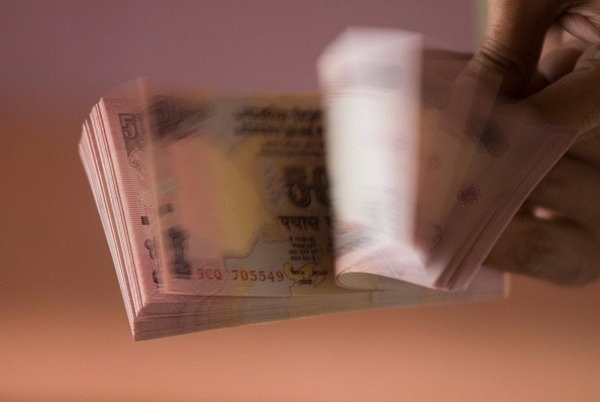Economy
Early Trends Suggest India Has Won Its War On Cash
- Before demonetisation, India relied heavily on cash. That is now changing.

Indian rupees (Rajkumar/Mint via Getty Images)
If early trends are any indication (and if the trends persist), India may have won its war on cash and moved firmly towards digitalisation – two major aims of the demonetisation exercise announced by Prime Minister Narendra Modi on the night of 8 November last year.
Before demonetisation, India relied heavily on cash and had an unhealthy cash-to-GDP ratio (12 per cent). The trend was also worsening over time. The graphs below depict the same:
The graph below shows cash-to-GDP ratio versus per capita GNI in PPP terms.
Finance Minister Arun Jaitley tabled the second part of Economic Survey 2016-17 in Parliament today (11 August), which tells us that in levels, and as a share of GDP and money, there seems to have been a sharp and equilibrium decline in the use of cash post-demonetisation. Currently, the total cash in holding is Rs 3.5 lakh crore, which is 20 per cent less than the level it would have been at if the demonetisation exercise would not have happened.
Cash as a share of GDP also declined by about 1.6 percentage points, down from 11.3 per cent of GDP to 9.7 per cent. Cash as a share of M1, which represents liquid portions of money supply, also declined by five percentage points.
These trends indicate that reliance on cash has reduced significantly since November. And a lot of cash which was lying dormant in savings has now entered into the banking system.
Coming to digitalisation, a substantial jump can be observed across all categories: the poor, who are digitally excluded; the less affluent, who are slowly joining the digital economy as they have Jan Dhan accounts and RuPay cards; and the affluent, who have debit and credit cards. Though many people have gone back to using cash, the overall movement is in the positive direction, and transactions are higher than pre-demonetisation levels.
The figure below shows digital transactions for the poor (digitally excluded) and is measured through Aadhaar Enabled Payment Systems.
For the less affluent, who are in the process of joining the digital economy, the trends are equally encouraging. These have been captured by the use of RuPay cards.
The figures below represent the volume of digital transaction for affluent consumers and has been measured by tracking digital transactions via debit and credit cards and the Unified Payments Interface system.
One can see, as the Survey notes, “surge has moderated but the level and pace of digitalization are still substantially greater than before demonetization”.
These early trends point to India’s victory in its war on cash.
However, the Survey has struck a chord of caution by reserving a definitive judgment for the future. “A definitive judgment can only be passed if current levels of cash relative to GDP persist over time but so far, reliance on cash appears to have declined sharply." Indeed.
Support Swarajya's 50 Ground Reports Project & Sponsor A Story
Every general election Swarajya does a 50 ground reports project.
Aimed only at serious readers and those who appreciate the nuances of political undercurrents, the project provides a sense of India's electoral landscape. As you know, these reports are produced after considerable investment of travel, time and effort on the ground.
This time too we've kicked off the project in style and have covered over 30 constituencies already. If you're someone who appreciates such work and have enjoyed our coverage please consider sponsoring a ground report for just Rs 2999 to Rs 19,999 - it goes a long way in helping us produce more quality reportage.
You can also back this project by becoming a subscriber for as little as Rs 999 - so do click on this links and choose a plan that suits you and back us.
Click below to contribute.
Latest